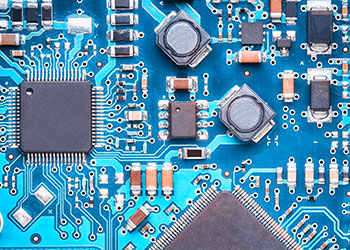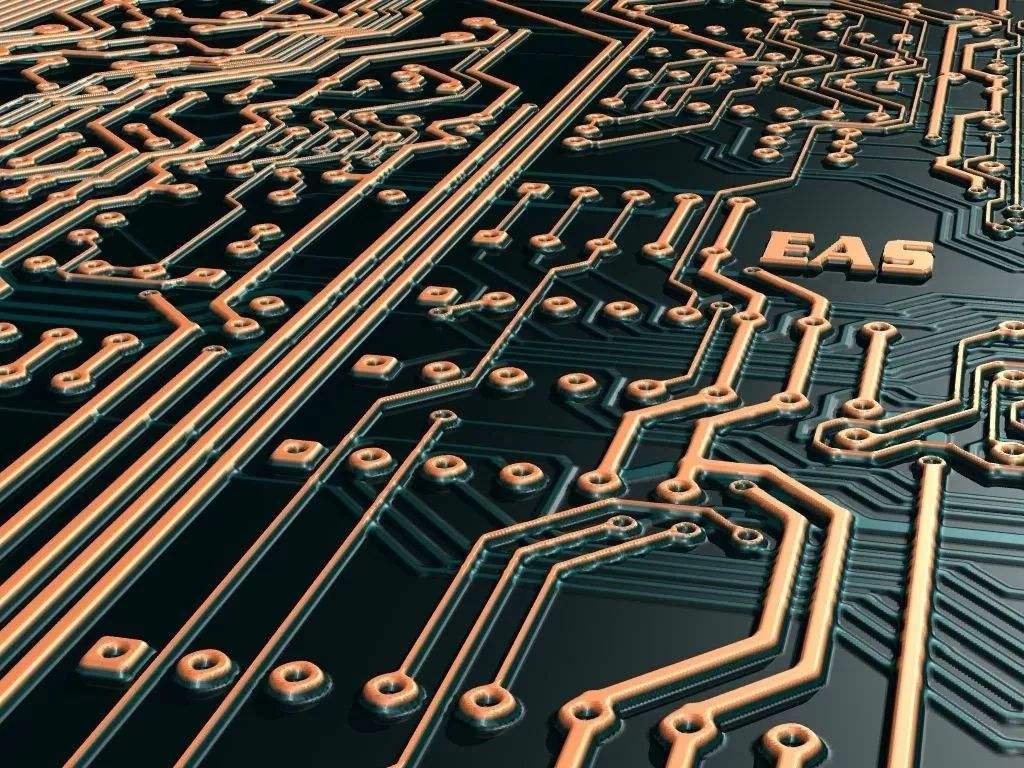
PCB stacking design
1. General principles of layer arrangement:
1.1 Many factors need to be considered to determine the structure of laminated multilayer PCB board In terms of wiring, the more layers, the better the wiring, but the cost and difficulty of manufacturing circuit boards will also increase For the manufacturer, whether the laminate structure is symmetrical is the focus of attention during manufacturing. In this case, the selection of layers needs to consider the needs of all aspects to achieve balance For experienced designers, after completing the pre layout of components, they will focus on analyzing PCB boards Analyze the wiring density of the circuit board with other EDA tools; Then combine the number and type of signal lines with special wiring requirements (such as differential lines), sensitive signal lines, etc Determine the number of signal layers; Then, according to the type of power supply, determine the isolation and anti-interference requirements for the number of internal power layers With this pipeline, the number of layers of the wholecircuit board is basically determined
1.2 The ground plane below the component surface (the second layer) provides the shielding layer of the device and the reference plane for the top wiring; The sensitive signal layer should be adopted to an internal electrical layer (internal power/ground layer) A film that provides a mask for the signal layer The high-speed signal transmission layer in the circuit shall be a signal intermediate layer sandwiched between two internal power layers With this kind of pipe, the copper film of the two internal electrical layers can provide an electromagnetic mask for high-speed signal transmission, and at the same time, the radiation of high-speed signals can be effectively limited between the two internal electrical layers to avoid external interference
1.3. All signal layers should be adjacent to the ground plane as much as possible;
1.4 Try to avoid two signal layers being directly adjacent; Crosstalk is easily introduced between adjacent signal layers, resulting in circuit failure Adding ground plane between two signal layers can effectively avoid crosstalk
1.5 The main power supply should be advanced to it as far as possible;
1.6 Consider the symmetry of the laminated structure
1.7 For the layer layout of the main board, the existing main board is difficult to control and long distance wiring For the board-level operating frequency above 50MHZ (the case below 50MHZ can be referred to, and appropriate relaxation), the recommended layout principles:
The component surface and the welding surface are complete ground planes (shielding); there are no adjacent parallel wiring layers; all signal layers are adjacent to the ground plane as much as possible; key signals are adjacent to the ground plane and do not cross the partition area. Note: The above principles should be flexibly grasped when setting specific PCB boards On the basis of understanding the above principles, according to the actual needs of the board, for example, whether it is a key cabling layer, power supply, and ground plane is necessary Wait, determine the layer arrangement, do not rub hard, or hold on
1.8 Multiple grounded internal power layers can effectively reduce the grounding impedance For example, the common mode interference can be effectively reduced by using separate ground planes for signal layer A and signal layer B
PCB board

2. Commonly used stacked structures:
2.1 4-layer plate
The following is an example of how to optimize the arrangement and combination of various stacking structures
There are several stacking methods (top to bottom) for general 4-layer boards
(1) Siganl_ 1 (Top), GND (Inner_1), POWER (Inner_2), Siganl_ 2 (Bottom).
(2) Siganl_ 1 (Top), POWER (Inner_1), GND (Inner_2), Siganl_ 2 (Bottom).
(3) POWER (Top), Siganl_ 1 (Inner_1), GND (Inner_2), Siganl_ 2 (Bottom). Obviously, Option 3 lacks effective coupling between the power plane and the ground plane and should not be used How do you choose Option 1 and Option 2? Under normal circumstances, the designer will choose Scheme 1 as the 4-layer board The reason for selection is not that option 2 cannot be used, but it is very common that PCB s only place components on the top layer. After all, option 1 is more appropriate However, when the components need to be placed at the top and bottom layers, the dielectric thickness between the internal power layer and the ground layer is large and the coupling is poor. It is necessary to consider which layer has fewer signal lines For Scheme 1, there are fewer signal lines at the bottom layer, and a large area of copper film can be used for coupling with the power layer; On the contrary, if the components are mainly arranged at the bottom layer, the circuit board of Scheme 2 shall be used
2.2 6-layer board
After completing the analysis of the laminated structure of the 4-layer plate, the following is an example of the 6-layer plate combination method to illustrate the layout and combination of the 6-layer plate laminated structure and the preferred method (1) Siganl_ 1 (Top), GND (Inner_1), Siganl_ 2 (Inner_2), Siganl_ 3 (Inner_3), POWER (Inner_4), Siganl_ 4 (Bottom). Scheme 1 adopts 4-layer signal layer and 2-layer internal power/ground layer. It has more signal layers, which is conducive to the wiring between components. However, the defects of this scheme are more obvious, mainly in the following two aspects
1. The power supply layer is far away from the ground layer and is not fully coupled
2. The signal layer Siganl_ 2 (Inner_2) and Siganl_ 3 (Inner_3) are directly adjacent, signal isolation is poor, and crosstalk is easy to occur (2) Siganl_ 1 (Top), Siganl_ 2 (Inner_1), POWER (Inner_2), GND (Inner_3), Siganl_ 3 (Inner_4), Siganl_ 4 (Bottom). Compared with Scheme 1, Scheme 2 is fully coupled with the power layer and ground plane, which has certain advantages over Scheme 1_ 1 (Top) and Siganl_ 2 (Inner_1) and Siganl_ 3 (Inner_4) and Siganl_ 4 (Bottom) signal layers are directly adjacent (3) Siganl_ 1 (Top), GND (Inner_1), Siganl_ 2 (Inner_2), POWER (Inner_3), GND (Inner_4), Siganl_ 3 (Bottom). Compared with Scheme 1 and Scheme 2, Scheme 3 reduces a signal layer and adds an internal electrical layer Although the number of layers available for cabling is reduced, this solution solves the common defects of Scheme 1 and Scheme 2
1. The power layer and ground layer are closely coupled
2. Each signal layer is directly adjacent to the internal electrical layer and effectively isolated from other signal layers, so crosstalk is not easy to occur
3. Siganl_ 2 (Inner_2) is adjacent to the two inner electrical layers GND (Inner_1) and POWER (Inner_3), which can be used to transmit high-speed signals The two inner electrical layers can effectively shield the outside interference to the Siganl_ 2 (Inner_2) layer and the Siganl_ 2 (Inner_2) interference to the outside world. Overall, Scheme 3 is obviously a kind of chemistry At the same time, Scheme 3 is also a commonly used laminated structure of 6 layers Through the analysis of the above two examples, I believe that readers have a certain understanding of cascading structures, but in some cases, a certain scheme cannot meet all requirements, which requires consideration of the priority of various design principles Unfortunately, because the layered design of circuit boards is closely related to the characteristics of actual circuits, and different circuits have different anti-interference effectiveness and design emphasis, in fact, these principles have no clear priority for reference But it is certain that design principle 2 (the internal power supply layer and ground layer should be tightly coupled) needs to be satisfied first in the design. If high-speed signals need to be transmitted in the circuit, then design principle 3 (the high-speed signal transmission layer in the circuit) should be the signal intermediate layer, and sandwiched between the two inner electrical layers) must be Satisfied
2.3 10-layer board
Typical 10-layer PCB design
The general wiring sequence is TOP--GND---signal layer---power layer---GND---signal layer---power layer---signal layer---GND---BOTTOM. The wiring sequence itself is not necessarily fixed, but there are some standards and principles that can constrain it: for example, GND is used for the adjacent layers of the top and bottom layers to ensure the EMC characteristics of the circuit board; For example, each signal layer is preferably used as a reference GND layer plane; The power supply used by the whole board is prior to laying the whole piece of copper; For high speed PCB boards susceptible to interference, the inner layer along the transition section is preferred









